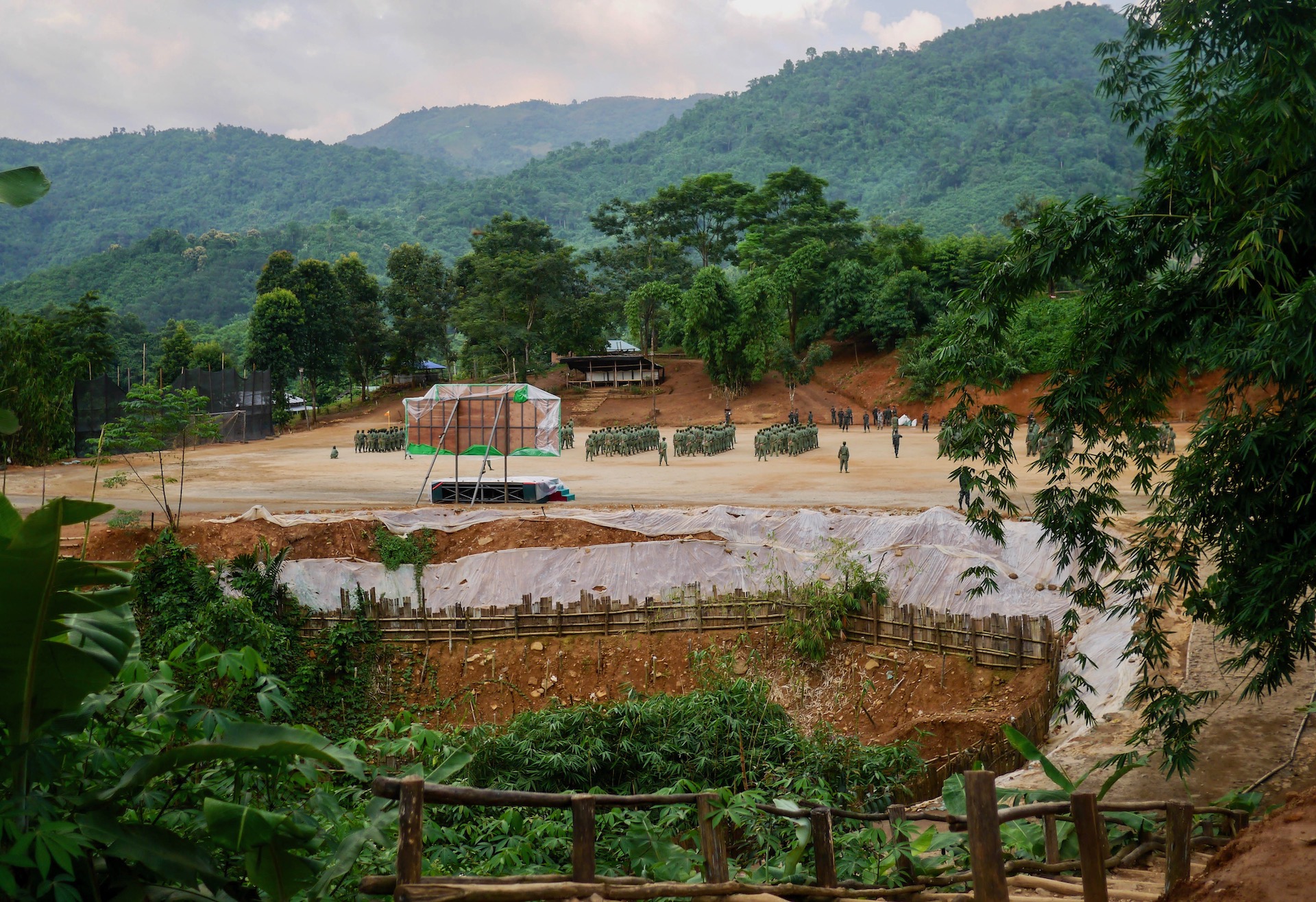|
|
|
In the aftermath of the November general election the intense fighting between the national armed forces (Tatmadaw) and the Arakan Army came to an unexpected halt. Since the February coup of the State Administration Council, the situation has remained delicately poised. Political sentiment is very high. But Rakhine nationalism is presently on a different cycle to political movements in other parts of the country. In this commentary Kyaw Lynn outlines why the coming months will remain a time of high tension and uncertainty in Arakan politics.
See the complete list of all the Myanmar commentaries.
|
|
|
|
 Arakan Army troops in forest training / Photo credit JG Arakan Army troops in forest training / Photo credit JG
|
|
|
|
|
|
|
| |
The Arakan Army, Myanmar Military Coup and Politics of Arakan
A Myanmar Commentary by Kyaw Lynn
10 June 2021
|
When political analysts in Myanmar and beyond discuss the role of ethnic armed organisations (EAOs) in the struggle against the military coup in February, the Arakan Army (AA) becomes one of the key political forces in shaping their dialogue and perceptions. The AA, the military wing of the United League of Army (ULA), is the only armed group that can challenge the power of the national armed forces (Tatmadaw) on Myanmar’s western frontiers. This became especially evident during the 2018-20 period when the ULA-AA demonstrated its sharp resistance against the power of the centralised Myanmar state. Behind the ULA rise, there were three key features: popular support among the Rakhine population, well-trained soldiers, and a younger leadership that read the evolving mood and political situation in the country perceptively well.
Since the February coup of the State Administration Council (SAC), the situation has begun to change. Many searching questions are being asked, a challenge that is facing communities in every part of the country. In particular, intense fighting between the Tatmadaw and AA came to an unexpected halt in the aftermath of the November general election when voting was cancelled in a majority of townships in Rakhine State (Arakan). As the history books will show, this cessation in hostilities was three months in advance of the military takeover, causing many people to question the political stand of the ULA in the current crisis. Indeed some have even accused the ULA-AA of cooperating with the military SAC in seeking to control civil society and pro-democracy political movements in Rakhine State and adjoining territories in Chin State.
It is important to stress, then, that the crisis is hardly black and white, and there are many local complexities with their roots in Arakan politics and Myanmar history. From what many would regard as a “realist perspective” among local leaders, the present military coup represents more of a clash and division between the central powers among the ethnic Bamar-majority in the country: in this case, between the armed forces of the Tatmadaw and National League for Democracy (NLD). In the post-coup context, some analysts believe that the political instability in central Myanmar (Burma Proper) will provide greater leverage for the ULA-AA to advance its “Way of Rakhita” philosophy in order to achieve its “Arakan Dream”.
Many cautions nevertheless remain, and it is incorrect to argue that the ULA-AA is simply practising a policy of isolationism and neutralism while it waits to see how the current crisis unfolds. The situation is highly fraught, with new challenges emerging every day. The present unilateral ceasefires are informal; AA soldiers are participating in fighting against the Tatmadaw with EAO allies in other parts of the country; and, at the same time, ULA leaders have refrained from participating in the National Unity Government (NUG), formed by NLD MPs-elect and other anti-SAC actors to challenge the legitimacy of the SAC. In a complex and fast-changing landscape, few of the political choices are easy.
|
|
|
|
|
|
| |
|
|
|